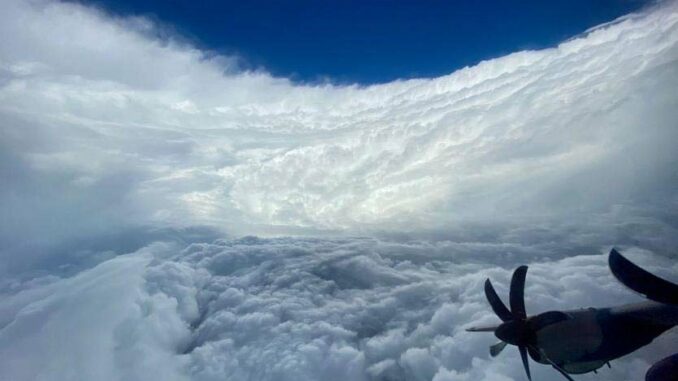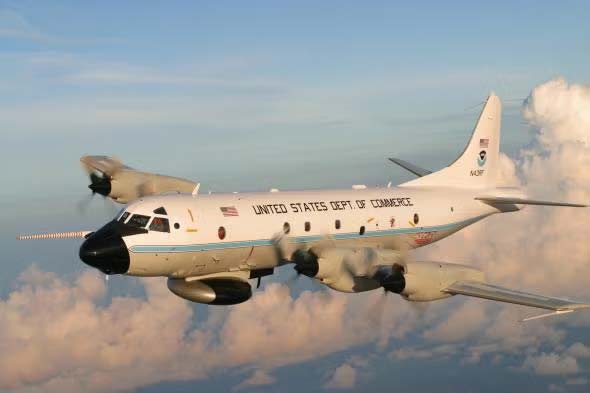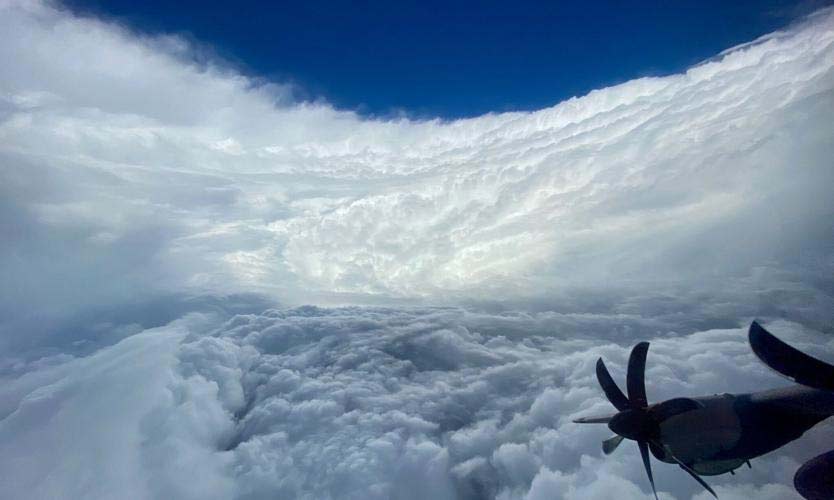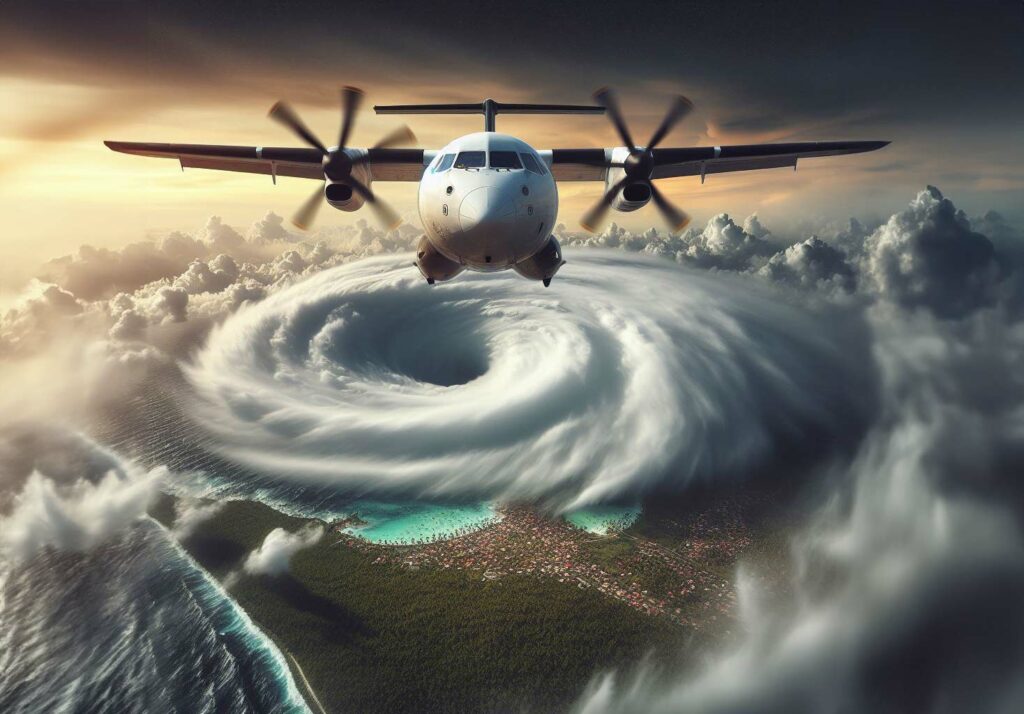
Flying through hurricanes represents a major aviation challenge. These extreme weather phenomena, characterized by winds often exceeding 119 km/h, raise critical questions about safety, aircraft design and piloting capabilities. This article examines the technical aspects of flying through a hurricane, highlighting the risks, strategies and implications for modern aviation.

Understanding Hurricanes
Definition and structure
A hurricane is an intense storm system formed in tropical waters, characterized by low central pressure, strong winds and heavy precipitation. The structure of a hurricane is divided into three main parts: the eye, the eye wall and the rain bands. The eye is a relatively calm zone at the center of the storm, surrounded by the eyewall where the strongest winds and most severe conditions are present.
Atmospheric dynamics
Hurricanes form over warm waters, where moist air rises and creates an area of low pressure. This process is reinforced by the Earth’s rotation, which contributes to the formation of cyclonic winds. Accurate forecasting of hurricane paths and intensity remains a challenge due to their dynamic and sometimes unpredictable nature.
Technical challenges for aircraft
Effects on the aircraft
Extreme turbulence in and around the hurricane’s eyewall can subject aircraft to severe mechanical stress. Visibility is often reduced to zero due to intense precipitation and dense clouds, making navigation mainly instrument-dependent.
Aircraft design considerations
Aircraft intended to fly in or near hurricanes must be specially designed to withstand severe turbulence. This includes a reinforced structure, reliable engines capable of operating despite extreme atmospheric variations, and advanced navigation and communication systems.

Historical examples and case studies
Examples of flights through hurricanes
NOAA’s Hurricane Hunters are notable examples of flights through hurricanes. These missions, often carried out by specially equipped aircraft such as the Lockheed WP-3D Orion, are crucial for collecting data on pressure, temperature, humidity and wind speed inside hurricanes.
Risk-benefit analysis
While these flights provide valuable information for hurricane forecasting, they also entail substantial risks. Crew safety is a major concern, and potential damage to the aircraft requires a careful weighing of benefits against risks.
Technical implications and consequences
Impact on Aircraft Systems
Engine performance and on-board instrument reliability are major concerns. Precipitation and pressure variations can affect engine operation, while humidity and electromagnetic interference can disrupt instruments and communications.
Flight strategies
Careful planning is essential, with flight paths designed to minimize exposure to the most extreme conditions. Pilots need specific expertise to navigate in these conditions, relying heavily on instruments and coordination with the weather services.
Flying through hurricanes is possible, but involves significant risks. These flights are mainly reserved for search and rescue missions in the event of a disaster. Technological improvements and increased international cooperation could contribute to a better understanding and management of the risks associated with these missions.
War Wings Daily is an independant magazine.
